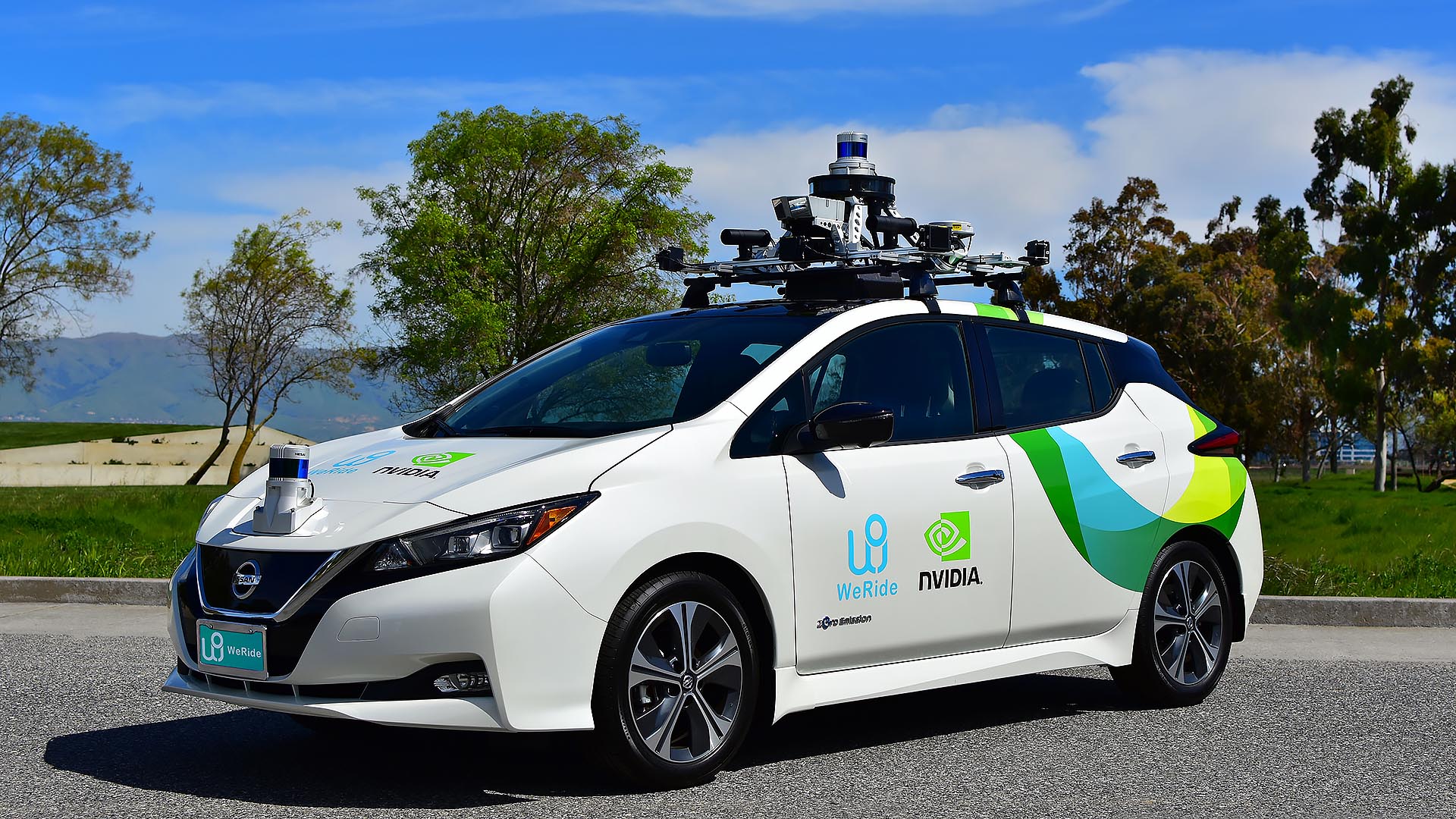

China’s WeRide is taking to the streets with its 5G-connected Level 4 self-driving Nissan Leafs, the Xinhua newswire says. According to the report, the “founded in Silicon Valley” startup with “its global headquarters in Guangzhou, China” was issued permits by the Guangzhou authorities that allow the company to operate 20 vehicles on the province’s roads in southern China.
Connections are everything in China, and WeRide comes with a bunch of them.
The company was founded by former Baidu autonomous driving chief scientist Tony Han, together with former Velodyne CFO Qing Lu and a gaggle of Facebook, Microsoft, Google, and Cisco alumni. WeRide is backed by Alliance Ventures, the strategic venture capital arm of the Renault-Nissan-Mitsubishi Alliance. It also has received funding from Hong Kong’s SenseTime, and the Agricultural Bank of China.

The 5G connectivity comes courtesy of mobile operator China Unicom. WeRide and China Unicom run a joint lab to research 5G-based autonomous driving.
The cars are Nissan Leafs. Built for Nissan’s ProPilot ADAS, the cars lend themselves nicely to be converted a few levels up the autonomous scale. To take the Leafs to Level 4, a degree of autonomy defined as “full self driving,” or “designed to perform all safety-critical driving functions and monitor roadway conditions for an entire trip,” WeRide uses the Nvidia Drive AGX Pegasus, a brawny (320 trillion operations per second) developer system that comes with two Xavier SoCs and two NVIDIA Turing GPUs. (If you are dying to set-up an AGX Drive for yourself, watch the video tutorial. To get one, apply here. If you want to get your feet wet with the technology: A teensy version, the Jetson Nano, can be yours for only $99, car excluded.)
To achieve 360 degree acuity, the up-converted Leaf is crowned by a forest of sensors to achieve multiple wavelength cross-verified detection. There are several LIDAR sensors with an up to 250 meters (820 ft) detection range, augmented with an extra LIDAR on the Leaf’s nose to, says WeRide, “adapt to road and traffic conditions in China,” which can be challenging, to put it mildly. (If anyone tells you that full self driving can be achieved which way less compute- and sensor-power, feel free to raise your eyebrows.)
According to the report, WeRide “plans to make modifications on 500 automobiles this year and equip them with L4 self-driving capabilities.”